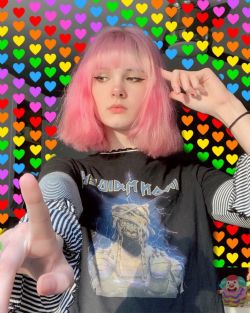Oxychan
Bianca Devins, also known as Oxychan, was a rising Internet personality and aspiring model whose life was cut short by an orbiter at the age of 17. On July 14, 2019, she was murdered by Brandon Clark, a friend she knew through social media. Her murder and the subsequent sharing of images online shocked the Internet community, leading to widespread discussions about online harassment, the responsibilities of social media platforms, and the darker aspects of internet culture.[1][2][3]
| Bianca Devins | |
|---|---|

| |
| Known as | |
| Born | October 2, 2001 |
| Nationality | American |
| Occupation | Aspiring Model, Aspiring E-Girl |
| Known for | Being Murdered |
| Dates Active | 2018–2019 |
| Social Media |
|
| Website | |
Origin
Bianca Devins began her online presence as an active user on Instagram and other social media platforms, where she shared her life and creative pursuits. Under the alias "Oxychan," she became known within 4chan for her distinctive style and engaging personality. Her online persona combined the street name for the narcotic OxyContin ("Oxy") with the Japanese term "chan," often used affectionately for a close female friend or lover.[4][5][3]
Spread
Bianca's social media following grew as she connected with more people online. Unfortunately, her growing presence also attracted negative attention. On July 13, 2019, after attending a concert with Brandon Clark, a friend from her online circle, she was brutally murdered by him in a fit of jealous rage. Clark documented the crime by posting images of Bianca’s body on Discord and Instagram, which quickly went viral. This incident shocked the internet and brought significant attention to the dangers of online relationships and the consequences of unchecked mental health issues.[2][6][3]
Bianca's Online Behavior
Bianca Devins was known for her frequent use of social media and had a complex online persona. She was involved in various online communities, including 4chan, where she was reportedly known for sending sexually explicit pictures to other users. According to testimony from her online circles, she would sometimes lie about her age to engage adult men in sexual conversations and later threaten to report them unless they complied with her demands. This manipulative behavior was partially attributed to her mental health struggles, including borderline personality disorder, which she had been diagnosed with.[3]
Conversations and screenshots shared online after her death revealed a pattern of manipulative and abusive behavior in her relationships. She reportedly used people for her own gratification, often engaging in harmful behavior toward those close to her. Despite these issues, her actions and lifestyle choices do not justify the violence that ended her life.[3]
The Murder
Bianca's murder highlighted the dark side of internet fame and the potential dangers of obsessive online relationships. On the night of her death, Bianca and Brandon attended a concert in New York City, during which an altercation allegedly occurred. According to reports, Bianca had kissed another man at the concert, leading to a confrontation with Brandon. Fueled by jealousy, Brandon murdered Bianca later that night and posted images of her body online, leading to a massive public outcry and further sensationalization by the media.[7][3]
Brandon Clark was apprehended at the scene after attempting to kill himself. He was later charged with second-degree murder and sentenced to 25 years to life in prison.[8]
Media Response and Impact
The murder of Bianca Devins became a focal point for discussions on online misogyny, the dangers of internet fame, and the responsibilities of social media platforms in monitoring and removing harmful content. The case was widely reported in the media, often with a focus on the sensational aspects of the crime. However, some narratives oversimplified the events, painting Bianca as an innocent victim of online stalking without acknowledging the complexities of her online interactions and mental health struggles.[3]
The widespread dissemination of the images of her murder also sparked debates on the ethics of sharing graphic content online and the psychological impact it can have on viewers, especially young audiences. It raised questions about the effectiveness of social media companies in preventing the spread of such content and protecting users from harm.[6][3]
Gallery
References
- ↑ Wikipedia: Murder of Bianca Devins
- ↑ Jump up to: 2.0 2.1 Bianca Devins: The Teen Girl Whose Murder Photos Went Viral
- ↑ Jump up to: 3.0 3.1 3.2 3.3 3.4 3.5 3.6 3.7 TomDark YouTube: The Truth About Bianca Devins
- ↑ Syracuse: Bianca Devins Murder
- ↑ CBS News: Bianca Devins Violent Images
- ↑ Jump up to: 6.0 6.1 BBC: Bianca Devins Murder
- ↑ People: Bianca Devins Murderer Sentenced
- ↑ The Independent: Bianca Devins Murder